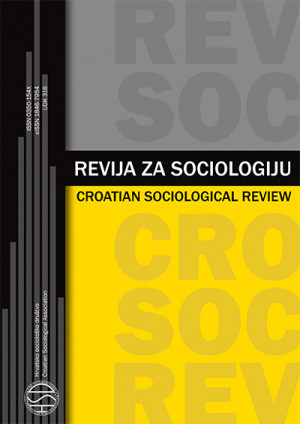Trend i čimbenici izvanbračnih rođenja u Hrvatskoj od 1998. do 2012. godine
Trend and Factors of Non-Marital Births in Croatia 1998–2012
Author(s): Dario PavićSubject(s): Social Sciences
Published by: Hrvatsko sociološko društvo
Keywords: non-marital births; second demographic transition; ethnicity; socioeconomic status
Summary/Abstract: Researchers have usually attributed the increasing share of non-marital births during the last forty years to changes in values of people with a better education and financial situation in the countries of Western Europe, naming this phenomenon the second demographic transition. These changes in values are focused on personal matters, the emancipation of women, personal freedom and rejection of traditional gender roles. However, in contrast to the results from Western Europe, non-marital births are more characteristic for the lower educated and economically weaker groups in the post-socialist countries of Eastern Europe. A suggested explanation for this phenomenon is the reduced benefit from entering into marriage for the poorest individuals, further reduced by changing social norms and the possible influence of liberal values and attitudes after the collapse of the socialist system. In this study, the socio-economic and socio-demographic factors that might have an effect on the probability of having a non-marital birth are analyzed, using the data on all births in the Republic of Croatia for the years 1998–2012. These factors include age, activity status, level of education and the ethnicity of both parents, as well as the region of birth. Logistic regression for the group of births by birth order found that the births to young, unemployed and dependent mothers, less educated fathers and those coming from national minorities, as well as the births in the City of Zagreb, are more likely to be non-marital births, similarly to the situation in the countries of Eastern Europe. The increasing share of non-marital births cannot be explained by changes in the share of the aforementioned categories in the total number of births, and it is probable that the deteriorating economic situation and changes in traditional values have increased the probability of having a non-marital birth for all socioeconomic groups.
Journal: Revija za sociologiju
- Issue Year: 44/2014
- Issue No: 2
- Page Range: 139-162
- Page Count: 24
- Language: Croatian

